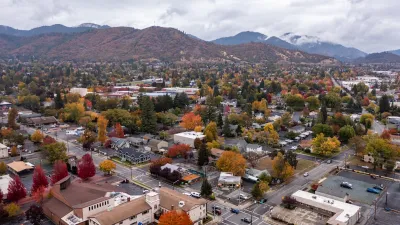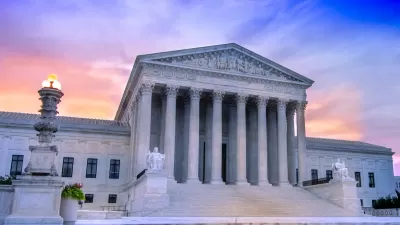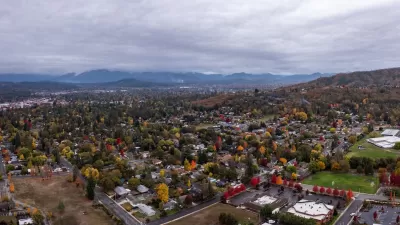The Supreme Court ruled in favor of a private land owner in Wyoming, who sued to reclaim land once granted to a railroad under an 1875 law. The ruling undermines the legality of the nation’s network of public trails built on former rail right-of-way.
Lyle Denniston details the 8-1 ruling in Marvin M. Brandt Revocable Trust v. United States: "At considerable potential cost to the federal government, the Supreme Court ruled Monday that land swapped with, or transferred to private owners under an 1875 law became their property in full again once a railroad that ran across the property has been abandoned. The decision turned mainly upon an argument that the government had made to the Court seventy-two years ago and won — an argument that now was turned against it." The 1942 case that enabled this week's ruling was Great Northern Railway Co. v. United States.
According to Denniston, it's still unclear just how much land the ruling will impact: "It is unclear just how many acres (primarily in western states) will be covered by the new ruling, although the Justice Department had told the Court that the case involved the legality of 'thousands of miles of former rights-of-way' that the public now uses as recreational trails or park lands."
In a separate article, Jess Bavin addresses the impact of the ruling on efforts around the country to convert former rail rights-of-way into public trails. Bavin quotes Justice Sonia Sotomayor, the lone dissenting member of the court, who makes the point of how expensive a decision this might represent: "The Court undermines the legality of thousands of former rights of way that the public now enjoys as means of transportation and recreation...And lawsuits challenging the conversion of former rails to recreational trails alone may well cost American taxpayers hundreds of millions of dollars."
FULL STORY: Opinion analysis: Victory — and money — for landowners

Alabama: Trump Terminates Settlements for Black Communities Harmed By Raw Sewage
Trump deemed the landmark civil rights agreement “illegal DEI and environmental justice policy.”

Planetizen Federal Action Tracker
A weekly monitor of how Trump’s orders and actions are impacting planners and planning in America.

The 120 Year Old Tiny Home Villages That Sheltered San Francisco’s Earthquake Refugees
More than a century ago, San Francisco mobilized to house thousands of residents displaced by the 1906 earthquake. Could their strategy offer a model for the present?

In Both Crashes and Crime, Public Transportation is Far Safer than Driving
Contrary to popular assumptions, public transportation has far lower crash and crime rates than automobile travel. For safer communities, improve and encourage transit travel.

Report: Zoning Reforms Should Complement Nashville’s Ambitious Transit Plan
Without reform, restrictive zoning codes will limit the impact of the city’s planned transit expansion and could exclude some of the residents who depend on transit the most.

Judge Orders Release of Frozen IRA, IIJA Funding
The decision is a victory for environmental groups who charged that freezing funds for critical infrastructure and disaster response programs caused “real and irreparable harm” to communities.
Urban Design for Planners 1: Software Tools
This six-course series explores essential urban design concepts using open source software and equips planners with the tools they need to participate fully in the urban design process.
Planning for Universal Design
Learn the tools for implementing Universal Design in planning regulations.
Clanton & Associates, Inc.
Jessamine County Fiscal Court
Institute for Housing and Urban Development Studies (IHS)
City of Grandview
Harvard GSD Executive Education
Toledo-Lucas County Plan Commissions
Salt Lake City
NYU Wagner Graduate School of Public Service





























